Living in a city for more than 20 years often disappoints you with the same old options for sightseeing. Isn’t it?
Something similar happened to me as I questioned the history and spirit of the former capital of Gujarat- Ahmedabad. And, then I remembered my long pending plan, due since a year, to visit the old city and explore the “walled city’s” stories, go deeper into the time of Sultan Ahmed Shah, the founder of Ahmedabad.

Finally, I enrolled myself for the renowned “Ahmedabad Heritage Walk” with a couple of friends. I was astonished by the spectacular mix of modern living in the most antique locality of Ahmedabad.
I am not here to describe the heritage walk (there is enough information on the net). Instead, my aim is to familiarize you to a time with less complexity and more modesty than the modern era.
What is the Heritage walk?
The walk is a well-known UNESCO recognized Ahmedabad City Tour, which takes nearly 2 and a half hours to circle specific landmarks. The walk commences around 7.45 am at Swaminarayan temple, Kalupur with an audio-visual documentary of Ahmedabad- reciting the story of its existence. The trail happens every morning, finally ends at the much talked about Jama Masjid around 10.30 am.
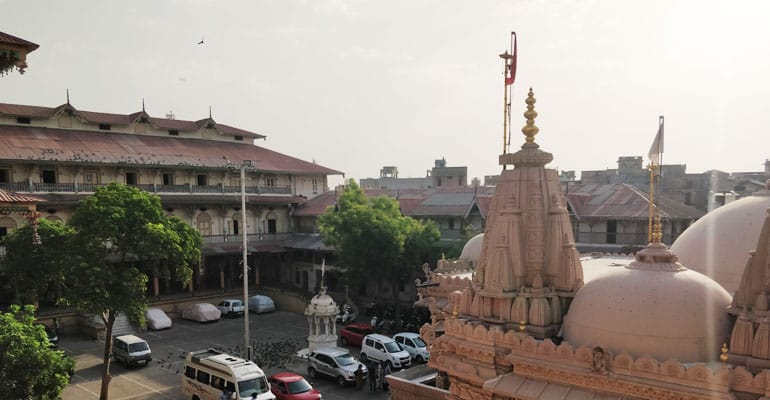
I wish to proudly announce that “Ahmedabad was declared as India’s first World Heritage City by UNESCO on July 8, 2017.” This honor surely reflects in the intertwined pols of the old city adorned with extraordinary architecture.
This one of a kind walk in the old city enfolds interesting stops including Clustered houses (Pol), Royal Mausoleum, Various religious temples, Bird Feeders, Ol’s, bridges, Mosques and ends only with a freshly made, hot plate of Fafda ane Jalebi ( as they call it in Gujarat).
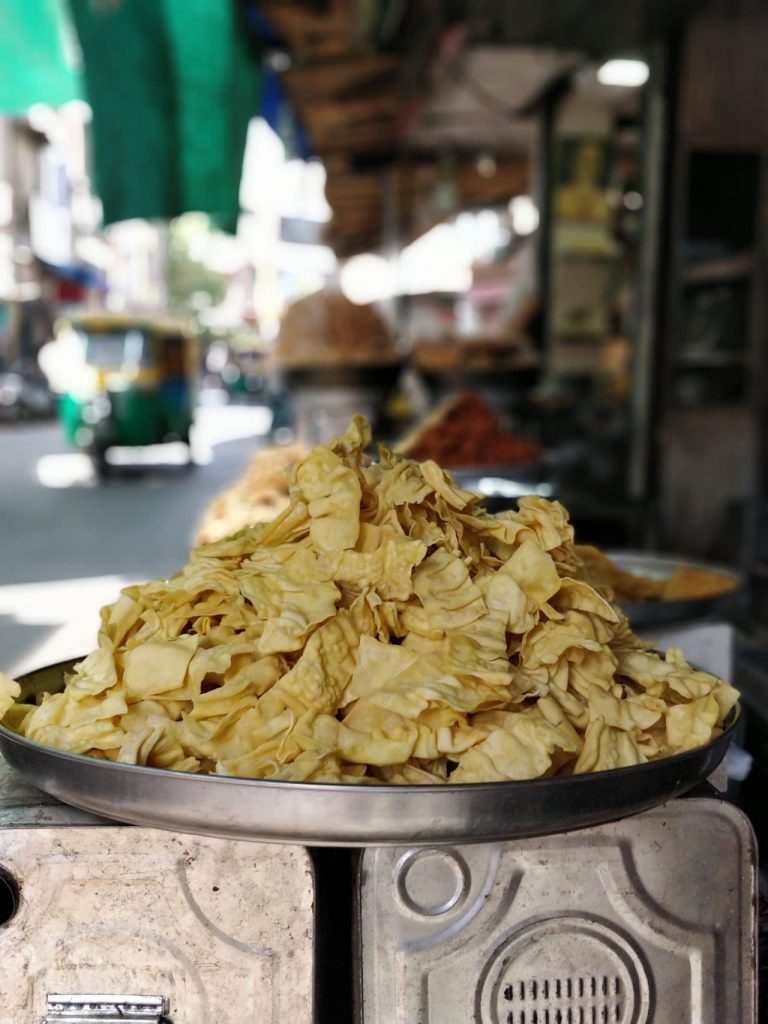
I may not entirely justify the visuals and my deep sense of admiration of what I saw in the self-contained neighborhood of the walled city that day, but I will try my best to help you visualize the unique intricacies of the walled city.
Accommodating ourselves in small spaces – Audio Visual Room
The Heritage walk begins with a documentary on the history of Ahmedabad, reminiscing the days of King Ahmed Shah. The office room, where they arrange for the documentary, is located opposite to the Swaminarayan temple on the 2nd floor.
What I appreciated about the arrangement for the documentary is that they use a tiny circular room, that barely accommodates 25 people, for the presentation and inception of the walk. Even though it is a government undertaken project run by the Ahmedabad Municipal Corporation, they could have transformed the office into a fancier location but restraining it to a small space keeps the austerity of the old city intact.
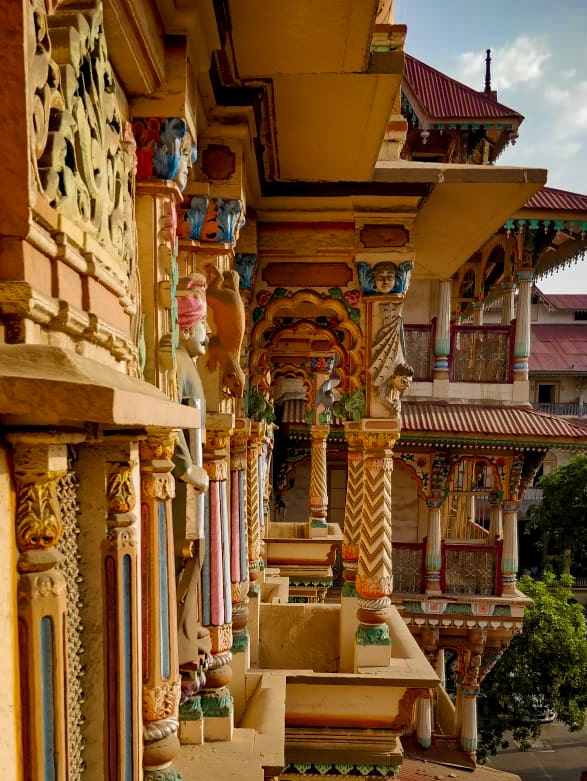
My Special Tip: Before you leave the more than 180 years old Swaminarayan Temple premise, do not forget to take a quick look on the Burma Teak wood carvings around the ashram built for the monks.
A feeling of Community and Safety in a Pol
Meandering through the streets at 8 am, I pondered how close-knit these families are. Or over the years, because of the shared walls and common courtyards, they were bound to stay with harmony and respect.
Pols are residential areas which are succeeded by colonies in today’s scenario. However, the quality of life and style of living has entirely transformed. Every Pol has a gate, a well, temple and the most interesting structure-the Otals (I’ll come to this later).
Indian architecture is ingrained in diverse ways in different Pols. Some display carved wooden houses with exquisite architecture, while others are influenced by Jain Derasars (Jain temples). There are around 600 Pols in Ahmedabad city.
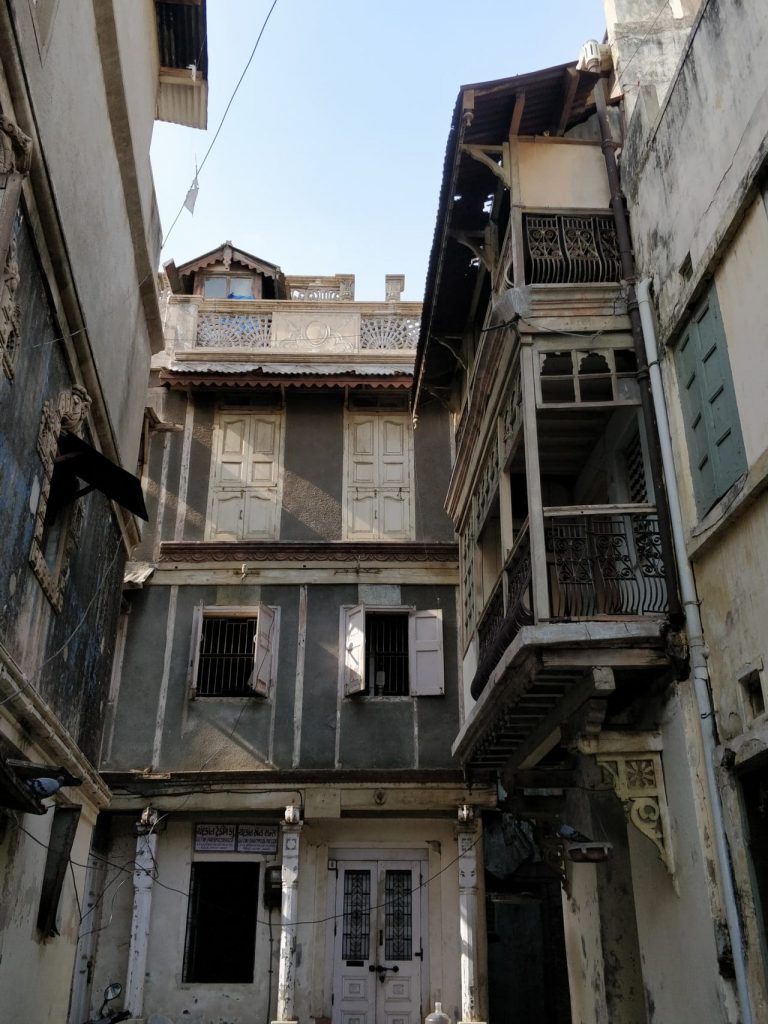
People belonging to the same caste, religion, or job stay in the same pols. In case your secular side finds this arrangement offensive, hear me out. There was logical reasoning behind living in religious or community-based colonies. The nature of the job varied from one community to another, and so did the temple or Mosque chants. Pol arrangement ensured no one from another community gets disturbed during an on-going celebration in another religious community.
But guess what, as a preparatory measure for a crisis, each Pol had a secret passage connected to another Pol.
When Facebook and Instagram did not take birth, Amdavadi’s enjoyed “Otlas” and “Angan”
Otla is an extension of the house, where family members can communicate with outsiders. Otlas were ornamented profusely symbolizing the social status of the household.
Along with the open space of the veranda, each Pol had a courtyard more commonly known as Anganu in the olden days. The best part about the Otlas and Angan was that they served as a common space for Pol members to assemble every evening (after completing their regular chores) and share their stories.
Each Pol also has a Blackboard to keep members up-to-date with the latest news and events to be conducted within the community.
These structures exude a feeling of togetherness and closeness, which we entirely miss in today’s generation of Facebook and Instagram. We all “appear” connected, but in reality, we aren’t!
Bird Feeders – “Chabutra” making a difference in daily life
Chabutra’s were the most exciting part of the tour. Every corridor had these beautiful, well-heightened bird feeders with attached stairs. Young kids can easily climb the feeders and arrange food for the birds. The idea of having a bird feeder in today’s time is next to impossible, call it lack of space or lack of selflessness.
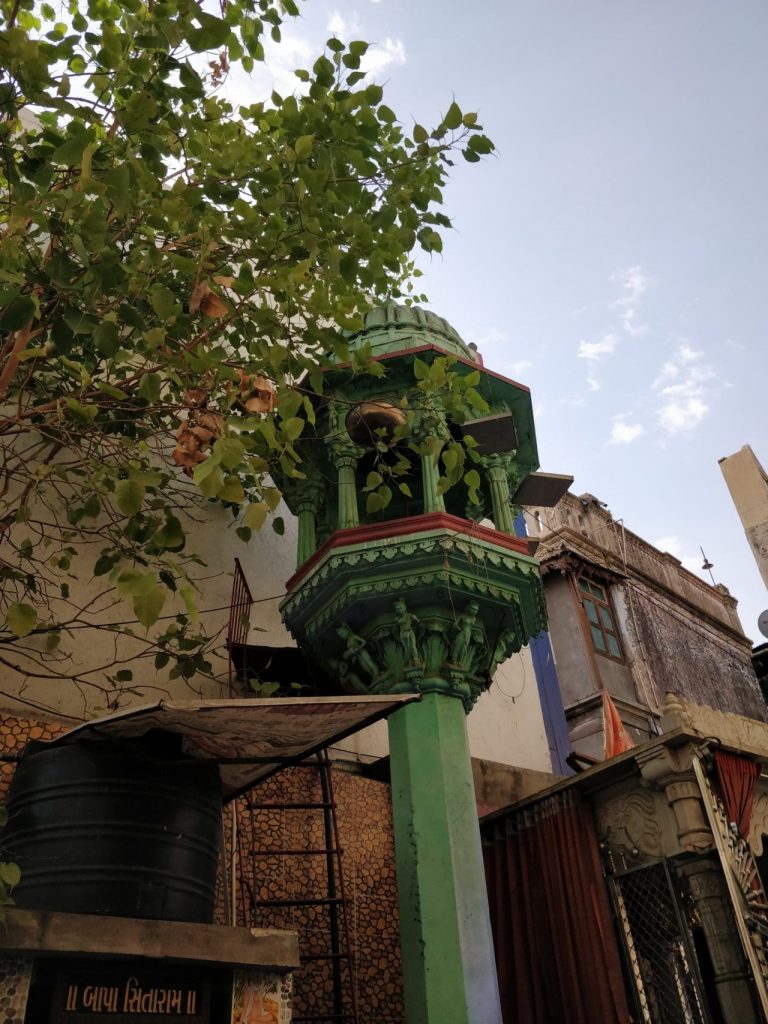
The relaxing sounds you experience is the joyful chirping of birds in the Birdfeeders. It is a sight worth waiting for.
Upar Makan Niche Dukan
Chandla Ol is one of the most popular markets for Pooja (worship of God) items in Ahmedabad. They sell an exceptional collection of brass items like statues, tableware, flower vase, and much more.
The concept of houses and shops in the neighborhood was slightly unique and intriguing. On the first floor, families have built a comfortable abode, and on the ground floor, they sell worshipping items.
According to our guide, the whole family is involved in the business of the shop, and this makes it very flexible for each member to sit on the shop while taking the other gets sufficient breaks time to time.
It is hard to find such concepts today. Either family members are separated, or the shops reside on the other side of the town. The transformation of business in Ahmedabad has taken roots from these small shops, yet the feeling has changed than what I saw in Chandla Ol.
When in Ahmedabad, Heritage Walk Is A Must!
During the 2001 earthquake in Gujarat, epicenter at Bhuj, the new city, situated on the other side of river Sabarmati, endured life-threatening damages but the old city saw fewer losses comparatively. Any guesses why? The sole reason was the wooden layouts kept in alteration to the bricks that helped survived the impact.
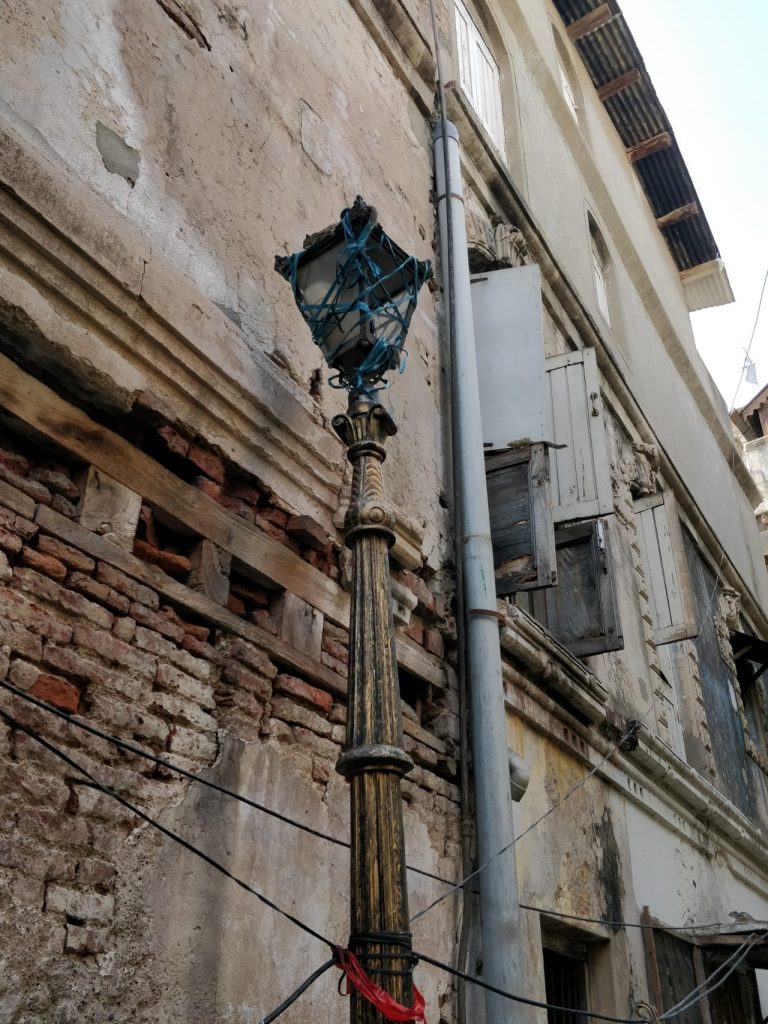
Not only an Earthquake, but the exceptional design of drainage system ensures no waterlogging in the old city when the other side of the river takes a day off from work and schools.
Just like the facts mentioned above, there is so much to learn and know about the olden days of Ahmedabad that no book can describe. I am short of words to sketch the humble and patient guide -Murtaza, who showed us around the city with a warm heart and explained every landmark with utmost details.
On completion of the Temple to Masjid walk (popularly known in the city), I realized the simplicity people relished back then. Thanks to technology and telecommunication, we all fell apart instead of coming together.
Live the old days in today’s modern time, on your next trip to this vibrant city. A heritage walk around the ancient city of Amdavad should be a must-do in your itinerary.

